Ready To See SEO Done Differently?
We Are A Search-First Digital Marketing Agency. SEO and AIO Is What We Do Best.
Modern SEO is about knowing how to optimize all aspects of your website. SEO involves technical components, content, links and credibility signals, and user engagement metrics. As competition and scope increases, so does the need to be stronger in each area. Our SEO packages are designed to influence the things that will help get your business ranked for the keywords that matter in your area.
Search engine optimization is what we are known for - and it's what we do best. We have a deep knowledge and expertise of getting results. Since our inception in 2009, its been at the core of who we are. We love search because - more than any other digital channel - there is already likely an established need and an intent to act on it. When there is existing demand for a product or service, it's the best overall channel to get in front of new customers. Below, you'll find some insights into our service offering, the deliverables, and some information about timeline and expectations.
AVG Increase in SEO Traffic
AVG Increase in Sales & Leads
AVG Increase in Conversion Rate
Transparency & Clarity of Deliverables
Before You Invest In SEO and AIO
Take A Look At How We Get Results
If you are about to engage with a partnership over a longer period of time with financial investments for your SEO needs, it's important to know how your SEO provider executes and delivers their SEO service. We've compiled an overview document of our SEO service, as well as a video explaining the details of the service. There is more in the video than in the doc (the video is about 40 minutes) but it's worth the time to understand and compare services when choosing a partner. We help you show up wherever your customers are searching.
You can either watch the video, or review the SEO Overview document if you prefer.
Watch the Video About Our Optimization Process
Trusted By
Small Businesses, Franchises, and Enterprise Organizations
Intelligent Strategy + Great Execution = Organic SEO Growth
Increasing Rankings in Local and National Results
SEO Service Packages
Our SEO packages are structured to give you the best chance to compete in your market - whether that is local, national, or global. We've help early stage businesses up to global enterprises solve difficult SEO challenges and gain new exposure in Google.
Each package has an allotment of "points" you can use to execute your SEO plan. This approach will end up saving you thousands of dollars per month VS assembling and executing with an in-house SEO team.
Standard Package
$750 -$1,500/mo
EARLY STAGE BUSINESSES WITH LESS THAN 1M IN REVENUE
This package is designed to help get you started, and focuses on the foundational items to help a small business start growing. Ideally for local business with less than 1 million in revenue. This package combines Local SEO and Google Business Profile Optimization for a perfect mix of impact in a local market. For less than the cost of one employee, you get access to your own SEO Specialist.
What's Included:
- $500 Setup
 We have a heavy lift in the first month to get things set up and rolling, so we do require a one-time initial set up fee to get your campaign off the ground.
We have a heavy lift in the first month to get things set up and rolling, so we do require a one-time initial set up fee to get your campaign off the ground. - 5-10 Topics
 A topic is a service or product, and includes the main keywords and the close variants. With limited budget, we have to limit the topic scope, but we will prioritize the topics that are achievable and that will produce a business impact on revenue.
A topic is a service or product, and includes the main keywords and the close variants. With limited budget, we have to limit the topic scope, but we will prioritize the topics that are achievable and that will produce a business impact on revenue. - Topic Research
 SEO & Keyword Research is the process of uncovering search volume data, finding the right keywords to target, and gathering data that will be used to create the strategy and plan moving forward.
SEO & Keyword Research is the process of uncovering search volume data, finding the right keywords to target, and gathering data that will be used to create the strategy and plan moving forward. - SEO Initial Assessment
 SEO Initial Assessment is to give us an overall roadmap and baseline starting position.
SEO Initial Assessment is to give us an overall roadmap and baseline starting position. - SEO Technical Audit
 The Technical SEO Audit to discover technical issues like crawling, indexing, 404s, redirects, etc that can hinder rankings.
The Technical SEO Audit to discover technical issues like crawling, indexing, 404s, redirects, etc that can hinder rankings. - Content Editing &
Optimization We'll help you optimize your content to rank in a local market. We sometime share this with the client - we provide outlines and strategy, you provide copy, we optimize it.
We'll help you optimize your content to rank in a local market. We sometime share this with the client - we provide outlines and strategy, you provide copy, we optimize it.
- Conversion Tracking
 Conversion Tracking to know how users are interacting with your website. We track things like form submissions, calls from mobile devices, and other actions that are centric to your business goals.
Conversion Tracking to know how users are interacting with your website. We track things like form submissions, calls from mobile devices, and other actions that are centric to your business goals. - Local Citations
 We include local citations from over 100 listings - starting with the top 50-70 and including niche and geographically local listings relevant to your business.
We include local citations from over 100 listings - starting with the top 50-70 and including niche and geographically local listings relevant to your business. - Landing Pages
 As content is developed, we'll be creating new landing page opportunities. A landing page should have everything a user needs to make a decision or to continue their discovery, so we'll craft pages designed to engage and capture leads.
As content is developed, we'll be creating new landing page opportunities. A landing page should have everything a user needs to make a decision or to continue their discovery, so we'll craft pages designed to engage and capture leads. - Marketing Dashboards
 Analytics Dashboard to monitor and keep track of progress. Data like rankings, traffic, traffic sources, conversions, and more can be found on your custom analytics interface. Data is updated at least daily so you can see in real time how things are going.
Analytics Dashboard to monitor and keep track of progress. Data like rankings, traffic, traffic sources, conversions, and more can be found on your custom analytics interface. Data is updated at least daily so you can see in real time how things are going. - Detailed Deliverables
 Each SEO project gets an in-depth worksheet outlining the plan and the work that we execute. We do our best to make everything visible and clear so you can be a part of the process.
Each SEO project gets an in-depth worksheet outlining the plan and the work that we execute. We do our best to make everything visible and clear so you can be a part of the process.
Growth Package
$1,500 - $3,000/mo
SMALL BUSINESSES WITH MORE THAN 1M REVENUE
An Out-Of-The-Box SEO Plan for the growing small business with more than 1 million in revenue. This package has 10-20 topics and give great coverage for a growing business for less than the cost of one employee. Our most popular plan, this plan has a high ROI and produces leads that grows revenue.
What's Included:
- $1,000 Setup
 We have a heavy lift in the first month to get things set up and rolling, so we do require a one-time initial set up fee to get your campaign off the ground.
We have a heavy lift in the first month to get things set up and rolling, so we do require a one-time initial set up fee to get your campaign off the ground. - 10-20 Topics
 A topic is a service or product, and includes the main keywords and the close variants. We focus on the top 10-20 topics and we will prioritize the topics with you that are achievable and that will produce a business impact on revenue.
A topic is a service or product, and includes the main keywords and the close variants. We focus on the top 10-20 topics and we will prioritize the topics with you that are achievable and that will produce a business impact on revenue. - AIO and LLM Optimization
 Includes LLM answer analysis, answer optimization, structured data, and citation building for local exposure.
Includes LLM answer analysis, answer optimization, structured data, and citation building for local exposure. - Topic Research
 SEO & Keyword Research is the process of uncovering search volume data, finding the right keywords to target, and gathering data that will be used to create the strategy and plan moving forward.
SEO & Keyword Research is the process of uncovering search volume data, finding the right keywords to target, and gathering data that will be used to create the strategy and plan moving forward. - SEO Initial Assessment
 SEO Initial Assessment is to give us an overall roadmap and baseline starting position.
SEO Initial Assessment is to give us an overall roadmap and baseline starting position. - SEO Technical Audit
 The Technical SEO Audit to discover technical issues like crawling, indexing, 404s, redirects, etc that can hinder rankings.
The Technical SEO Audit to discover technical issues like crawling, indexing, 404s, redirects, etc that can hinder rankings. - CRM Integration*
 If an integration with your CRM exists, we can apply points to help you set up the data flow from forms to CRM, automating that process to save you time and help with lead capture and faster follow up.
If an integration with your CRM exists, we can apply points to help you set up the data flow from forms to CRM, automating that process to save you time and help with lead capture and faster follow up.
- Content Editing &
Optimization We'll help you optimize your content to rank in a local market. We sometime share this with the client - we provide outlines and strategy, you provide copy, we optimize it.
We'll help you optimize your content to rank in a local market. We sometime share this with the client - we provide outlines and strategy, you provide copy, we optimize it. - Conversion Tracking
 Conversion Tracking to know how users are interacting with your website. We track things like form submissions, calls from mobile devices, and other actions that are centric to your business goals.
Conversion Tracking to know how users are interacting with your website. We track things like form submissions, calls from mobile devices, and other actions that are centric to your business goals. - Local Citations
 We include local citations from over 100 listings - starting with the top 50-70 and including niche and geographically local listings relevant to your business.
We include local citations from over 100 listings - starting with the top 50-70 and including niche and geographically local listings relevant to your business. - Citation Explorer *
 Expanded citation building that includes voice search, aggregators, and more citations pointing back to your website. Citation Explorer also gives us a citation page that list all the new citations - giving Google and other crawlers access to discover citations faster so they are more effective.
Expanded citation building that includes voice search, aggregators, and more citations pointing back to your website. Citation Explorer also gives us a citation page that list all the new citations - giving Google and other crawlers access to discover citations faster so they are more effective. - Landing Pages
 As content is developed, we'll be creating new landing page opportunities. A landing page should have everything a user needs to make a decision or to continue their discovery, so we'll craft pages designed to engage and capture leads.
As content is developed, we'll be creating new landing page opportunities. A landing page should have everything a user needs to make a decision or to continue their discovery, so we'll craft pages designed to engage and capture leads. - Marketing Dashboards
 Analytics Dashboard to monitor and keep track of progress. Data like rankings, traffic, traffic sources, conversions, and more can be found on your custom analytics interface. Data is updated at least daily so you can see in real time how things are going.
Analytics Dashboard to monitor and keep track of progress. Data like rankings, traffic, traffic sources, conversions, and more can be found on your custom analytics interface. Data is updated at least daily so you can see in real time how things are going. - Detailed Deliverables
 Each SEO project gets an in-depth worksheet outlining the plan and the work that we execute. We do our best to make everything visible and clear so you can be a part of the process.
Each SEO project gets an in-depth worksheet outlining the plan and the work that we execute. We do our best to make everything visible and clear so you can be a part of the process.
Pro Package
$3,000 - $5,000/mo
ESTABLISHED BUSINESSES THAT NEED SUSTAINABLE GROWTH
This package gets a detailed plan for executing your SEO Strategy. We target a wider range of topics and keywords with both location agnostic and location specific searches. It also includes project management and a monthly consulting meeting where you get to discuss Progress, Results, and Opportunities (Our PRO Cadence). You'll also get our marketing dashboard where you can monitor important KPIs like keyword rankings, conversions, traffic, and so much more. More aggressive than the Growth Package, this package allows for more monthly utilization, helping you take your SEO efforts further into more markets, more landing pages, and a wider organic footprint.
What's Included:
- $1,500 Setup
 We have a heavy lift in the first month to get things set up and rolling, so we do require a one-time initial set up fee to get your campaign off the ground.
We have a heavy lift in the first month to get things set up and rolling, so we do require a one-time initial set up fee to get your campaign off the ground. - 20-40 Topics
 A topic is a service or product, and includes the main keywords and the close variants. We focus on the top 20-40 topics and we will prioritize the topics with you that are achievable and that will produce a business impact on revenue.
A topic is a service or product, and includes the main keywords and the close variants. We focus on the top 20-40 topics and we will prioritize the topics with you that are achievable and that will produce a business impact on revenue. - AIO and LLM Optimization
 Includes LLM answer analysis, answer optimization, structured data, and citation building for local exposure.
Includes LLM answer analysis, answer optimization, structured data, and citation building for local exposure. - Topic Research
 SEO & Keyword Research is the process of uncovering search volume data, finding the right keywords to target, and gathering data that will be used to create the strategy and plan moving forward.
SEO & Keyword Research is the process of uncovering search volume data, finding the right keywords to target, and gathering data that will be used to create the strategy and plan moving forward. - SEO Initial Assessment
 SEO Initial Assessment is to give us an overall roadmap and baseline starting position.
SEO Initial Assessment is to give us an overall roadmap and baseline starting position. - SEO Technical Audit
 The Technical SEO Audit to discover technical issues like crawling, indexing, 404s, redirects, etc that can hinder rankings.
The Technical SEO Audit to discover technical issues like crawling, indexing, 404s, redirects, etc that can hinder rankings. - Competitive Intelligence
 SEO Competitive Intelligence is the process of identifying the top ranking sites for your targeted keywords and breaking them down into measurable attributes and ranking factors to identify what Google wants from the keyword results, what top sites are doing to rank, and what the ga is between your website and the top ranking sites. This data is used to identify the actionable steps to become a better resource and improve ranking ability.
SEO Competitive Intelligence is the process of identifying the top ranking sites for your targeted keywords and breaking them down into measurable attributes and ranking factors to identify what Google wants from the keyword results, what top sites are doing to rank, and what the ga is between your website and the top ranking sites. This data is used to identify the actionable steps to become a better resource and improve ranking ability. - Media Queries Monitoring
 Monitoring for media queries and link opportunities. These can be sparse for some industries, but the opportunities can be significant to acquire highly credible and relevant inbound links.
Monitoring for media queries and link opportunities. These can be sparse for some industries, but the opportunities can be significant to acquire highly credible and relevant inbound links. - Web UI / UX Design
 For pages that need UX/UI improvements to compete, we can assign points to website updates to get the look and feel right so we have the best chance to convert organic traffic.
For pages that need UX/UI improvements to compete, we can assign points to website updates to get the look and feel right so we have the best chance to convert organic traffic. - CRM Integration*
 If an integration with your CRM exists, we can apply points to help you set up the data flow from forms to CRM, automating that process to save you time and help with lead capture and faster follow up.
If an integration with your CRM exists, we can apply points to help you set up the data flow from forms to CRM, automating that process to save you time and help with lead capture and faster follow up.
- Content Editing &
Optimization We'll help you optimize your content to rank in a local market. We sometime share this with the client - we provide outlines and strategy, you provide copy, we optimize it.
We'll help you optimize your content to rank in a local market. We sometime share this with the client - we provide outlines and strategy, you provide copy, we optimize it. - Conversion Tracking
 Conversion Tracking to know how users are interacting with your website. We track things like form submissions, calls from mobile devices, and other actions that are centric to your business goals.
Conversion Tracking to know how users are interacting with your website. We track things like form submissions, calls from mobile devices, and other actions that are centric to your business goals. - Local Citations
 We include local citations from over 100 listings - starting with the top 50-70 and including niche and geographically local listings relevant to your business.
We include local citations from over 100 listings - starting with the top 50-70 and including niche and geographically local listings relevant to your business. - Citation Explorer *
 Expanded citation building that includes voice search, aggregators, and more citations pointing back to your website. Citation Explorer also gives us a citation page that list all the new citations - giving Google and other crawlers access to discover citations faster so they are more effective.
Expanded citation building that includes voice search, aggregators, and more citations pointing back to your website. Citation Explorer also gives us a citation page that list all the new citations - giving Google and other crawlers access to discover citations faster so they are more effective. - Landing Pages
 As content is developed, we'll be creating new landing page opportunities. A landing page should have everything a user needs to make a decision or to continue their discovery, so we'll craft pages designed to engage and capture leads.
As content is developed, we'll be creating new landing page opportunities. A landing page should have everything a user needs to make a decision or to continue their discovery, so we'll craft pages designed to engage and capture leads. - Expanded Content Creation
 Content Creation with strategic outlines and content designed to meet the requirements of search engines and your prospective users, engineered to fully cover a topic and its subtopics.
Content Creation with strategic outlines and content designed to meet the requirements of search engines and your prospective users, engineered to fully cover a topic and its subtopics. - Link Outreach
 Link Outreach to find relevant link targets to pitch link opportunities. We used a mix of strategies to acquire links using manual outreach. That may include pitching expert quotes to add to existing articles, getting content published to existing articles, pitching new content, and contributing to news or journalist content as a third party validation source.
Link Outreach to find relevant link targets to pitch link opportunities. We used a mix of strategies to acquire links using manual outreach. That may include pitching expert quotes to add to existing articles, getting content published to existing articles, pitching new content, and contributing to news or journalist content as a third party validation source. - Marketing Dashboards
 Analytics Dashboard to monitor and keep track of progress. Data like rankings, traffic, traffic sources, conversions, and more can be found on your custom analytics interface. Data is updated at least daily so you can see in real time how things are going.
Analytics Dashboard to monitor and keep track of progress. Data like rankings, traffic, traffic sources, conversions, and more can be found on your custom analytics interface. Data is updated at least daily so you can see in real time how things are going. - Detailed Deliverables
 Each SEO project gets an in-depth worksheet outlining the plan and the work that we execute. We do our best to make everything visible and clear so you can be a part of the process.
Each SEO project gets an in-depth worksheet outlining the plan and the work that we execute. We do our best to make everything visible and clear so you can be a part of the process.
Advanced Package
$5,000+/mo
MEDIUM TO LARGE ESTABLISHED BUSINESSES
This package is our most aggressive package, and gets a detailed plan for executing your SEO Strategy. We target a wider range of topics and keywords with both location agnostic and location specific searches. It also includes project management and a monthly consulting meeting where you get to discuss Progress, Results, and Opportunities (Our PRO Cadence). You'll also get our marketing dashboard where you can monitor important KPIs like keyword rankings, conversions, traffic, and so much more. More aggressive than the Pro Package, this package allows for more monthly utilization, helping you take your SEO efforts further into more markets, more landing pages, and a wider organic footprint.
What's Included:
- $1,500 Setup
 We have a heavy lift in the first month to get things set up and rolling, so we do require a one-time initial set up fee to get your campaign off the ground.
We have a heavy lift in the first month to get things set up and rolling, so we do require a one-time initial set up fee to get your campaign off the ground. - 50+ Topics
 A topic is a service or product, and includes the main keywords and the close variants. We focus on the top 50 or more topics and we will prioritize the topics with you that are achievable and that will produce a business impact on revenue.
A topic is a service or product, and includes the main keywords and the close variants. We focus on the top 50 or more topics and we will prioritize the topics with you that are achievable and that will produce a business impact on revenue. - AIO and LLM Optimization
 Includes LLM answer analysis, answer optimization, structured data, and citation building for local exposure.
Includes LLM answer analysis, answer optimization, structured data, and citation building for local exposure. - Topic Research
 SEO & Keyword Research is the process of uncovering search volume data, finding the right keywords to target, and gathering data that will be used to create the strategy and plan moving forward.
SEO & Keyword Research is the process of uncovering search volume data, finding the right keywords to target, and gathering data that will be used to create the strategy and plan moving forward. - SEO Initial Assessment
 SEO Initial Assessment is to give us an overall roadmap and baseline starting position.
SEO Initial Assessment is to give us an overall roadmap and baseline starting position. - SEO Technical Audit
 The Technical SEO Audit to discover technical issues like crawling, indexing, 404s, redirects, etc that can hinder rankings.
The Technical SEO Audit to discover technical issues like crawling, indexing, 404s, redirects, etc that can hinder rankings. - Competitive Intelligence
 SEO Competitive Intelligence is the process of identifying the top ranking sites for your targeted keywords and breaking them down into measurable attributes and ranking factors to identify what Google wants from the keyword results, what top sites are doing to rank, and what the ga is between your website and the top ranking sites. This data is used to identify the actionable steps to become a better resource and improve ranking ability.
SEO Competitive Intelligence is the process of identifying the top ranking sites for your targeted keywords and breaking them down into measurable attributes and ranking factors to identify what Google wants from the keyword results, what top sites are doing to rank, and what the ga is between your website and the top ranking sites. This data is used to identify the actionable steps to become a better resource and improve ranking ability. - Media Queries Monitoring
 Monitoring for media queries and link opportunities. These can be sparse for some industries, but the opportunities can be significant to acquire highly credible and relevant inbound links.
Monitoring for media queries and link opportunities. These can be sparse for some industries, but the opportunities can be significant to acquire highly credible and relevant inbound links. - Web UI / UX Design
 For pages that need UX/UI improvements to compete, we can assign points to website updates to get the look and feel right so we have the best chance to convert organic traffic.
For pages that need UX/UI improvements to compete, we can assign points to website updates to get the look and feel right so we have the best chance to convert organic traffic. - CRM Integration*
 If an integration with your CRM exists, we can apply points to help you set up the data flow from forms to CRM, automating that process to save you time and help with lead capture and faster follow up.
If an integration with your CRM exists, we can apply points to help you set up the data flow from forms to CRM, automating that process to save you time and help with lead capture and faster follow up.
- Content Editing &
Optimization We'll help you optimize your content to rank in a local market. We sometime share this with the client - we provide outlines and strategy, you provide copy, we optimize it.
We'll help you optimize your content to rank in a local market. We sometime share this with the client - we provide outlines and strategy, you provide copy, we optimize it. - Conversion Tracking
 Conversion Tracking to know how users are interacting with your website. We track things like form submissions, calls from mobile devices, and other actions that are centric to your business goals.
Conversion Tracking to know how users are interacting with your website. We track things like form submissions, calls from mobile devices, and other actions that are centric to your business goals. - Local Citations
 We include local citations from over 100 listings - starting with the top 50-70 and including niche and geographically local listings relevant to your business.
We include local citations from over 100 listings - starting with the top 50-70 and including niche and geographically local listings relevant to your business. - Landing Pages
 As content is developed, we'll be creating new landing page opportunities. A landing page should have everything a user needs to make a decision or to continue their discovery, so we'll craft pages designed to engage and capture leads.
As content is developed, we'll be creating new landing page opportunities. A landing page should have everything a user needs to make a decision or to continue their discovery, so we'll craft pages designed to engage and capture leads. - Expanded Content Creation
 Content Creation with strategic outlines and content designed to meet the requirements of search engines and your prospective users.
Content Creation with strategic outlines and content designed to meet the requirements of search engines and your prospective users. - Link Outreach
 Link Outreach to find relevant link targets to pitch link opportunities. We used a mix of strategies to acquire links using manual outreach. That may include pitching expert quotes to add to existing articles, getting content published to existing articles, pitching new content, and contributing to news or journalist content as a third party validation source.
Link Outreach to find relevant link targets to pitch link opportunities. We used a mix of strategies to acquire links using manual outreach. That may include pitching expert quotes to add to existing articles, getting content published to existing articles, pitching new content, and contributing to news or journalist content as a third party validation source. - Expanded Digital PR + Outreach
 Position your brand as a thought leader in your space. We'll create compelling content designed to engage your target audience and to attract an amplifier audience to gain link opportunities, social shares, and brand metrics we need to influence SEO.
Position your brand as a thought leader in your space. We'll create compelling content designed to engage your target audience and to attract an amplifier audience to gain link opportunities, social shares, and brand metrics we need to influence SEO. - Marketing Dashboards
 Analytics Dashboard to monitor and keep track of progress. Data like rankings, traffic, traffic sources, conversions, and more can be found on your custom analytics interface. Data is updated at least daily so you can see in real time how things are going.
Analytics Dashboard to monitor and keep track of progress. Data like rankings, traffic, traffic sources, conversions, and more can be found on your custom analytics interface. Data is updated at least daily so you can see in real time how things are going. - Detailed Deliverables
 Each SEO project gets an in-depth worksheet outlining the plan and the work that we execute. We do our best to make everything visible and clear so you can be a part of the process.
Each SEO project gets an in-depth worksheet outlining the plan and the work that we execute. We do our best to make everything visible and clear so you can be a part of the process.
Looking for Enterprise Support?
Reach out and get a quote. As a full-service SEO company, we can often create a custom solution for multi-location and enterprise businesses based on each organization's needs. Reach out to our team and let's find a solution that fits for you.
Are You Ready For AI in SEO?
Artificial Intelligence is here, and it's here to stay. The question is - how do we use it? SEOteric is on the leading edge of AI, integrating trend analysis and AI tools into our development and marketing solutions. It's important to note that AI is more of a "co-pilot" and a tool to be used by professionals. In the right hands, it can increase efficiency and effectiveness of initiatives. It's not a replacement for strategy and execution, but a tool that can help achieve new and exciting things. We don't use AI as a replacement for talent - but we do leverage it to create new opportunities for growth.

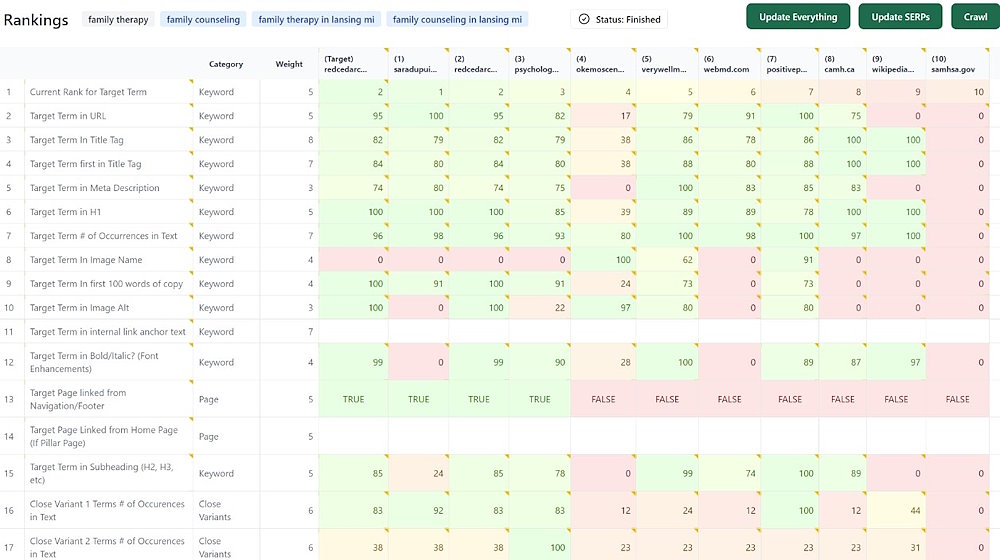
We Don't Make Guesses. We Find and Execute The Gap.
SEO Competitive Intelligence
This is a look at our Competitive Intelligence tool. This is something we've built to better understand search relevance and ranking. We analyze the top 10 ranking websites for specific keywords, and get a detailed look at why sites are ranking there. We can then put a plan together to catch up to these sites based on what Google is telling us a website needs to compete for these keywords. This tool is not available anywhere else, and give us a great advantage to obtaining ranking results.
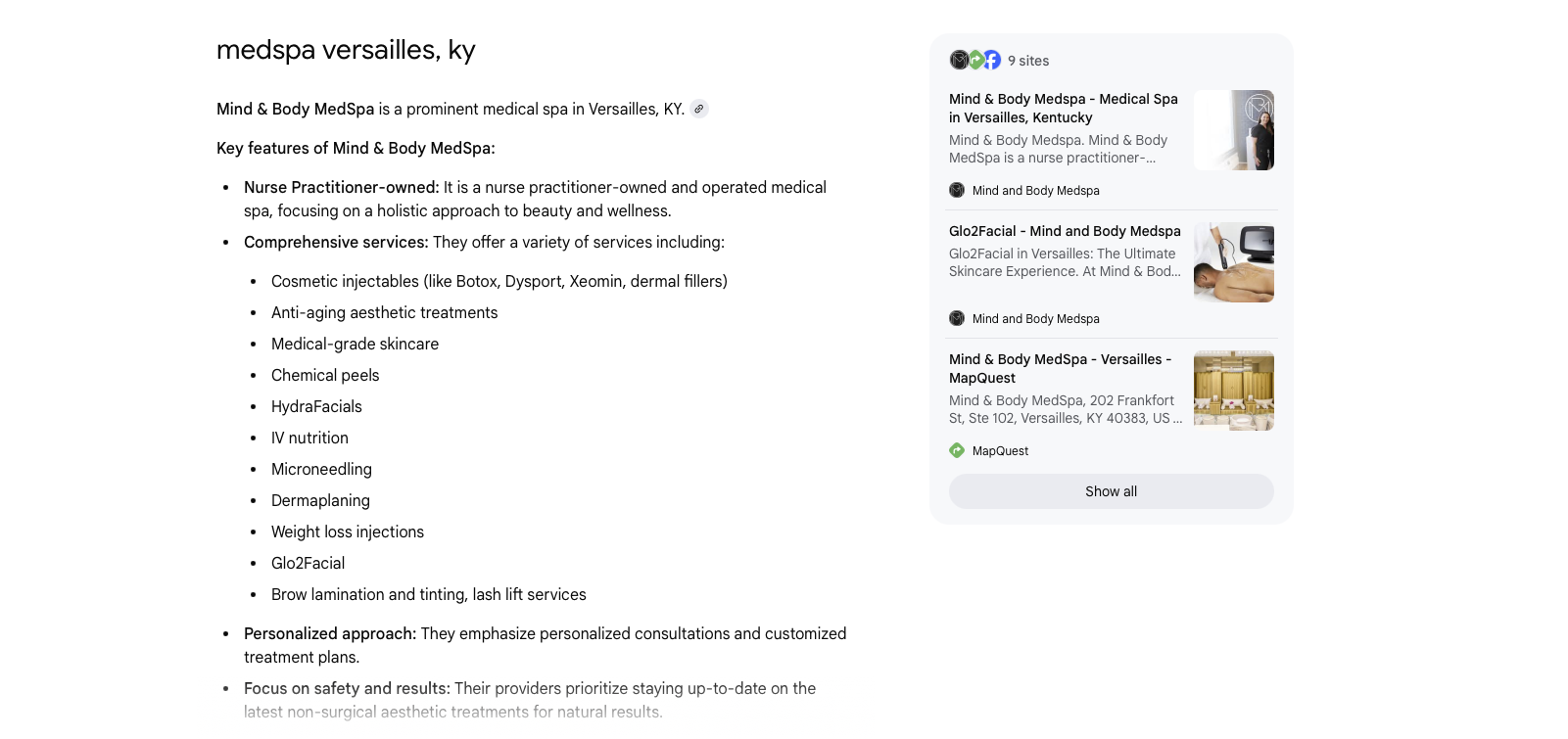
SEO Now Means Search Everywhere Optimization.
AIO - AI Optimization and LLM Answers
AI and LLMs (Large Language Models) like ChatGPT are gaining ground as a customer acquisition channel. Google's AI Overviews and the new AI Mode are two examples of how search is changing. Your potential customers are searching in Google, ChatGPT, Claude, and other platforms. Leveraging search to get in front of customers now means focusing on both search engines and AI platforms, and SEOteric has tested and proven strategies to help businesses become the right answers to your customers' questions - no matter where they search.
SEO Strategies That Tell A Better Story.
Digital PR + Search Engine Optimization
Digital PR and SEO are really becoming inseparable in competitive SEO spaces. New learnings on how Google ranks websites are showing us how much Google weighs brand signals and authority. Without engaging in strategies that create links, brand searches, and prominence for your brand, it's difficult to compete.
Our Digital PR strategies are designed to help you contribute as a thought leader in your space. We'll work with you to create a collection of topics we can address, create series of articles to package together as guides, and create insightful contributions that attract amplification, sharing, and links.
That process typically involves the following initiatives:
- Leveraging your internal brand strengths to add unique value to content
- Researching topics and creating new ideas
- Creating content assets like images, charts, infographics, and video to tell a more compelling story
- Publishing and optimizing content for added SEO value
- Sharing content on social media as "micromomemts"
- Engaging in outreach to pitch stories and content to publishers
- Monitoring links and brand mentions
- Tracking conversions in Google Analytics to know what pages, channels, etc are producing.
- Making adjustments based on user data and feedback.
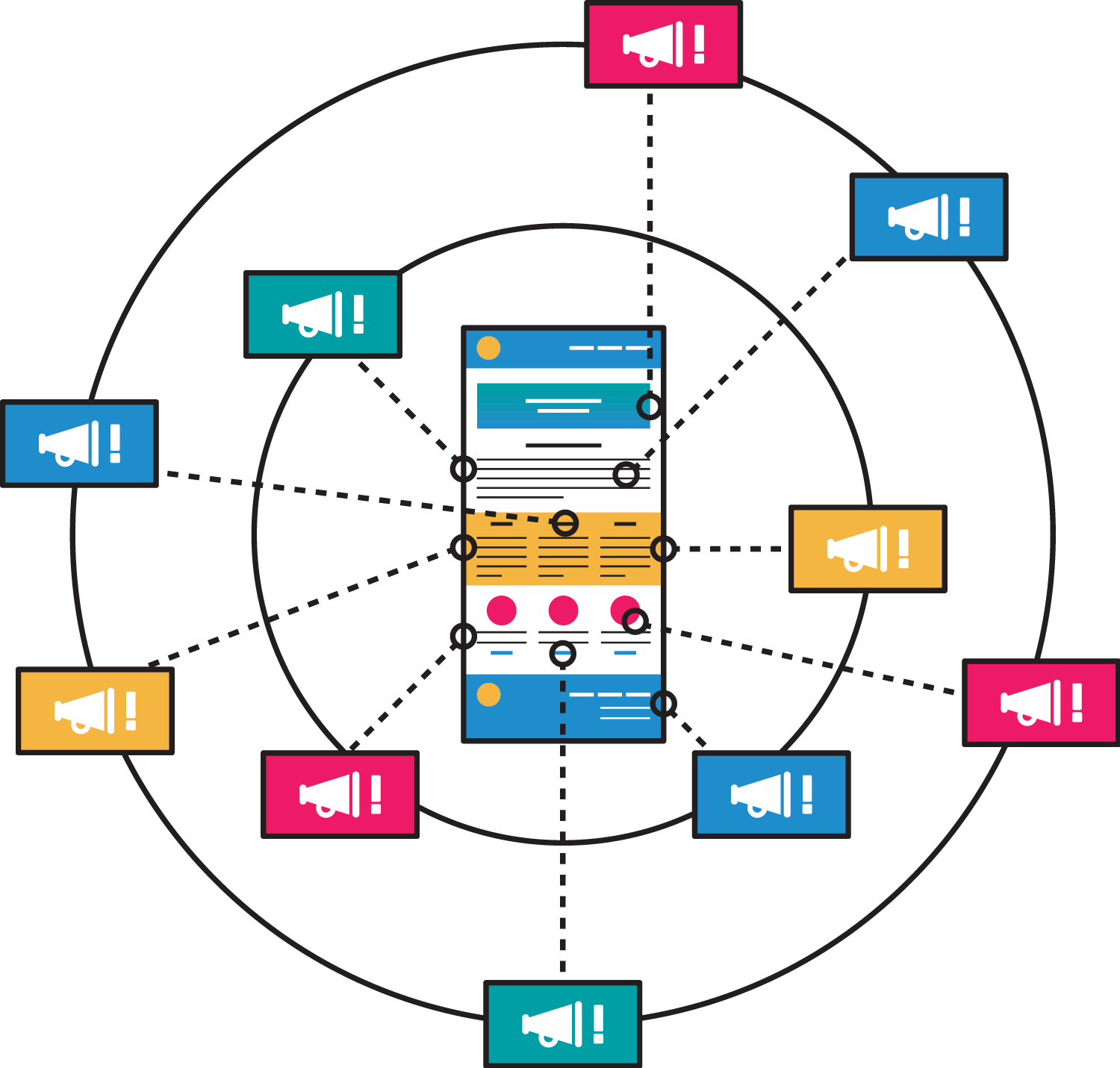

Content Optimization
In order to rank in Google, you have to be the best answer to the query. We'll research and develop content, optimize it, and refine it to turn your website into the best resource for Google and your potential customers. This involves creating new pages, editing and optimizing existing pages, and creating new internal link opportunities to strengthen the on-site signals needed for relevance.
To rank in a local market, we have to also be locally relevant and target customers with localized content. A high percentage of searches now have a local intent, so being locally relevant helps win more search visibility in your area.
That process typically involves the following initiatives:
- Keyword research to identify transactional terms that are likely to produce a result.
- Competitive Intelligence to see what top ranking websites in your niche are doing and what Google wants in order to rank.
- Outlines created to fully cover a topic and its subtopics.
- Content created, edited, proofed, and send for approval.
- Content implemented into the website and optimized for on-site SEO signals.
- Pillar pages (main topics) and sub pages (sub topics) created to fully cover a topic.
- Internal linking optimized by linking related and topical content both in content and in navigation.
- Content refinement to further optimize content based on rankings, Google algorithm adjustments, and competitor movements.
- Localizing content and landing pages for your target markets.
Links and Citations
Real links - from real websites. In addition to being a good resource, you also need credibility. We'll help you acquire new inbound links and citations from relevant, real and credible websites. Links that matter for SEO often meet the requirements of being "followed" (meaning Google is allowed to crawl and follow the link, and pass ranking metrics), attainable (the link makes sense from a time and resources perspective), relevant (within the same or related topics to the target website), credible (it has its own link and topical authority), and real (it exist for users and not just for link purposes). Local links from business near you and close to your service area can also impact local ranking potential.
Citations tend to be from sources that pass information like local listings or resources, and sometimes may be followed or no-followed, but can have an impact on overall relevance, credibility, and prominence. Links are one measurement of EEAT (Experience, Expertise, Authority and Trust), and we help you build credibility as we acquire relevant link opportunities. Some of the strategies used to get links include:
- HARO and media query monitoring (journalists asking for expert quotes).
- Outreach requesting inclusion into an existing article.
- Outreach pitching an expert quote to add to an existing article.
- Outreach to add new content on a related topic.
- Discovering unlinked mentions and asking for a link placement.
- Discovering content gaps and pitching new content.
- Creating relationships with complementary websites.
- Leveraging existing relationships for link opportunities.
- Creating local business listings and citations that point to your business.
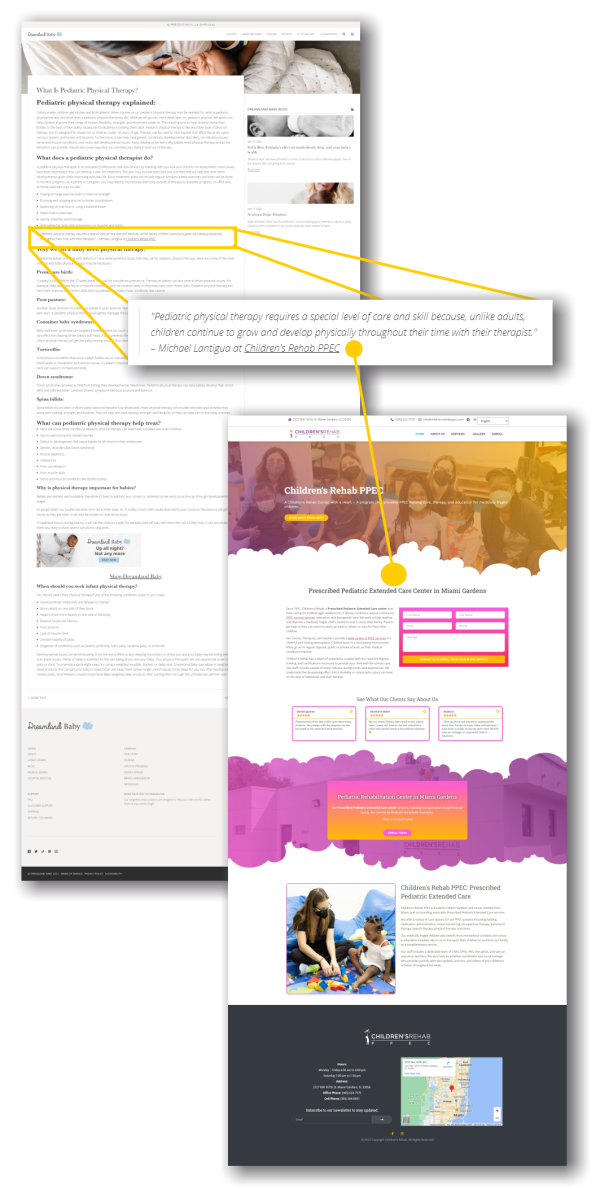
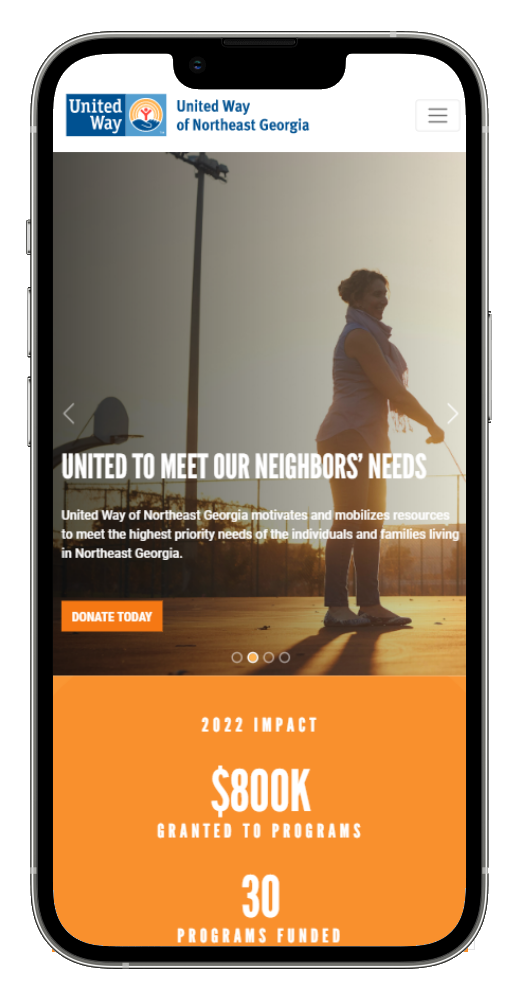
Conversions and Engagement
An important signal for Google is that users accomplish their search goals. This could be in a conversion event on your website, or that they found what they wanted and ended their search with your website. We'll help you create a user experience that encourages more conversions and search accomplishment. The result is increasing leads/sales and giving Google important machine learning data that may increase ranking potential.
If you are needing to capture more leads from your area, you have to give your users what they need. Providing detailed product and service information, answers to frequently asked questions, clear calls to action, and the ability to track and follow up on leads is a formula to convert more website visitors into sales and leads. This is especially true when local users area are looking for a good local solution.
That process typically involves the following initiatives:
- Competitive Intelligence to understand what users expect.
- Research and content creation to fill any content gaps.
- FAQ content development.
- Lead forms on landing pages.
- Easy click to call on mobile devices.
- Removing barriers to entry/barriers to conversion.
- Providing a clear call to action that resonates with your users.
- Providing use-cases where potential customers can see their need and your solution.
- Tracking conversions in Google Analytics to know what pages, channels, etc are producing.
- Targeting local users with localized content.
- Making adjustments based on user data and feedback.
Technical Optimizations
We'll analyze and optimize technical components of your website to ensure that is meets the requirements of crawlers and users - things like performance, indexing, information architecture, and structured data.
Technical SEO is one of the often overlook aspects of SEO, but without a sound technical foundation you can jeopardize other good strategies. Good content without proper URL structures or internal linking can cause orphaned pages or crawling issues. Search results and faceted search without proper canonical usage can cause loads of indexing issues. As you build out a website, its important to know how Google will crawl, render, and index each page and section of content to ensure the best ranking potential.
A few of the ways we handle technical SEO include:
- Broken links and 404 analysis
- Redirects analysis
- Canonical analysis
- Website Architecture analysis
- Duplicate content/meta data analysis
- Page Speed analysis
- Mobile Usability analysis
- Mobile-first Indexing analysis
- Search Console and indexing analysis
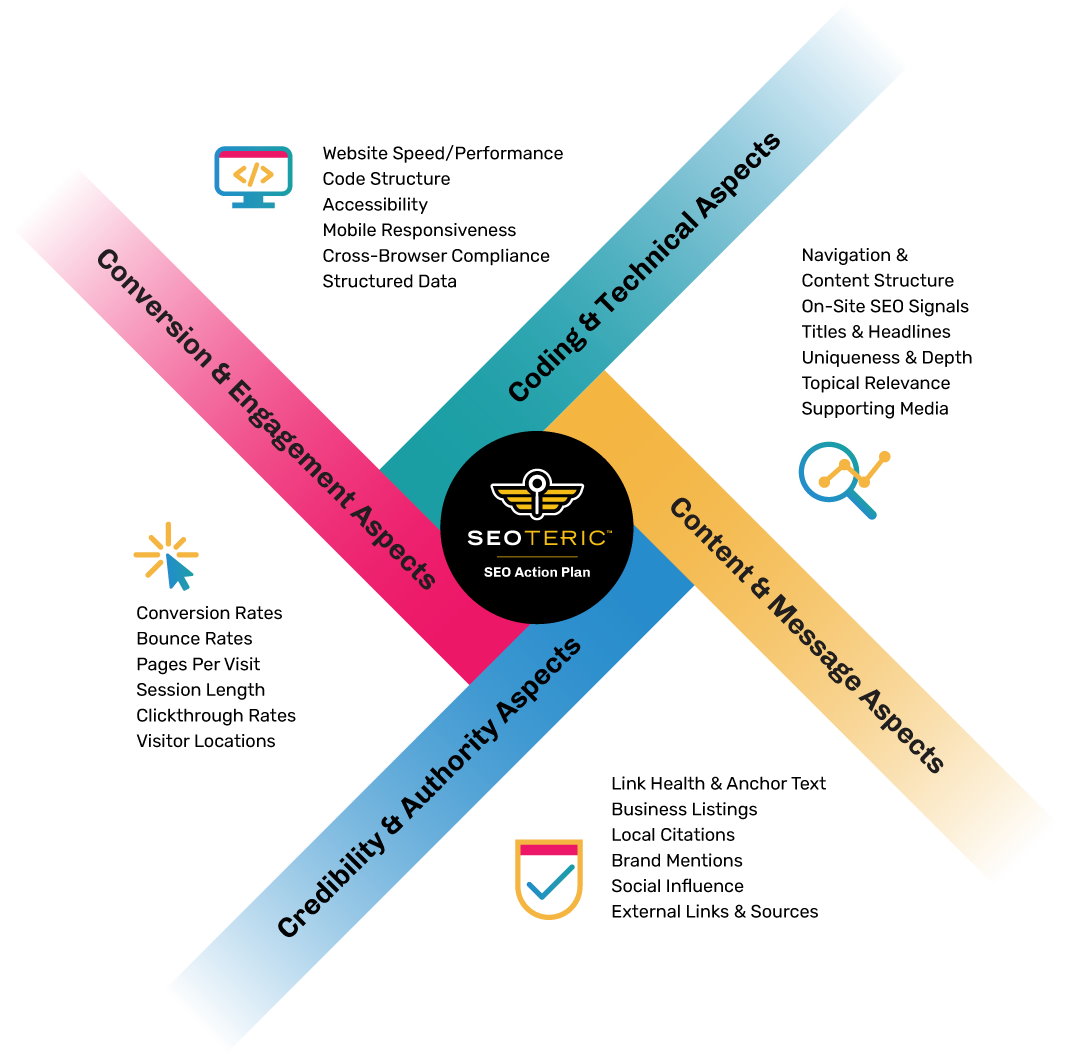
Get Your SEO Services Proposal and Start Growing!
Our Standard of Work
Our Goal is That Every Client Becomes a Case Study.
Franchise Marketing
Your Pie trust SEOteric with their website, SEO and Google ads for their 70+ franchises, as well as franchise recruiting for new franchise leads.
Increase In SEO Conversions
Local SEO + Google Ads
4esthetics Lounge trust SEOteric with their website, SEO and Google Business Profile, and Google Ads for their location in Lexington, KY.
Increase In Overall Conversions
Enterprise SEO + Consulting
World Bank via CGAP and FinDevGateway trust SEOteric with SEO consulting and guidance for their digital teams.
Increase In Organic SEO Traffic
Multi-Location Digital Marketing
Kaizen Auto Care trust SEOteric to manage digital marketing and SEO for their 40+ locations across the country. (Yes, 15X - ask for the chart.)
Increase In Organic SEO Traffic
SEO Services
Our SEO Service Covers Local, National, and E-commerce.
Local SEO
For local businesses, we get you more exposure in local searches including "near me" searches, searches with a city, and maps rankings.
National SEO
For clients looking for broader coverage for general terms (agnostic of location), we can help you achieve rankings for US based searches.
E-Commerce SEO
For e-commerce stores, we help you rank better at the category level and at the product level, optimizing your entire product catalog.
SEO Verticals
We Work With Clients Across The Spectrum of Businesses.
Franchise SEO
Get every location ranking better with a cohesive franchise SEO strategy. Google listings, location pages, individual reporting and so much more.
Multi-Location SEO
Similar to franchise SEO, but without multiple stakeholders. Manage SEO campaigns for each location and know how each is performing.
Home Services SEO
Home services like plumbers, electricians, roofers and remodelers can reach their audience by ranking better with SEO services.
Real Estate SEO
We've worked with brokers, individual agents, and real estate platforms to drive leads for all types of real estate companies..
Healthcare SEO
Doctors, Dentists, Counseling Centers and even Med Spas have all benefited from our local SEO service to get more appointments in the door.
Legal SEO
Individual attorneys and law firms have used our service for lead generation and for major cases (class action and individual claims.).
Saas SEO
Software as a Service companies range across a lot of industries but have similar challenges in acquiring customers with SEO.
Professional Services SEO
Professional services can include consultants, accountants, architects, engineers, and other service providers have potential for growth with SEO.
Product SEO
Whether you have a single product or a full e-commerce catalog, we can help you drive more sales with our SEO service.
Related Digital Marketing Services
We offer a full suite of Digital Marketing Services
Digital Marketing
We are more than a Google Ads and SEO agency. Explore how we can leverage an omnichannel approach with search, social media, ads, and more for a complete digital marketing solution that allows you to reach your clients across the spectrum of digital platforms.
Show Me MoreSEO Services
SEO is our flagship offering and what we are known for. We have a deep competency around search engine optimization and have helped clients of all sizes get better results from SEO. We can be your complete solution or give consulting and guidance to existing teams.
Show Me MoreGoogle Ads
Google Ads is a great way to get in front of people fast. Supplement your SEO efforts with a Google Ads campaign. We can help you maximize your exposure in search with a target plan to reach more visitors in Athens. Get a faster return when you advertise in Google.
Show Me MoreSocial Media Marketing
Social Media is a good way to generate demand for products or services that aren't searched for as heavily, or to supplement search demand for increased exposure. We help businesses with organic social media posting as well as social media advertising.
Show Me MoreWebsite Design
Our website design combines beautiful layouts with sound SEO and performance principles to give you a solid foundation for marketing. We build most of our sites in Wordpress, with additional capabilities for fully custom rails applications and e-commerce websites.
Show Me MoreWebsite Hosting
Our website hosting services utilize individual containers to provide more dedicated resources, security, and performance for each website. It's a managed service for both Wordpress sites and other applications, so we handle updates, backups, monitoring, and support so you don't have to.
Show Me MoreAwards & Recognition
Recognized by clients and industry publications for providing top-notch service and results.
Ready To Grow?
Contact Us to Set Up A Discovery Call
Show Up Higher in Google
Our clients love working with us, and we think you will too. Give us a call to see how we can work together - or fill out the contact form.
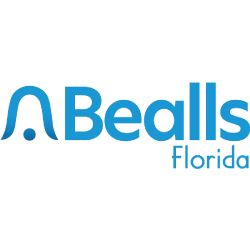


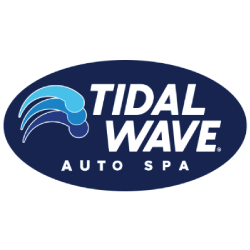
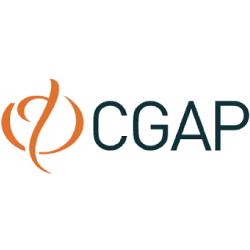


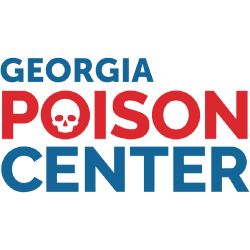
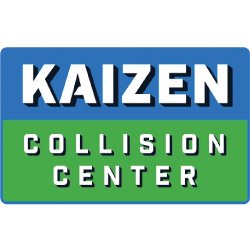

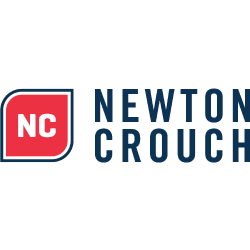
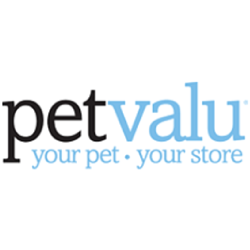
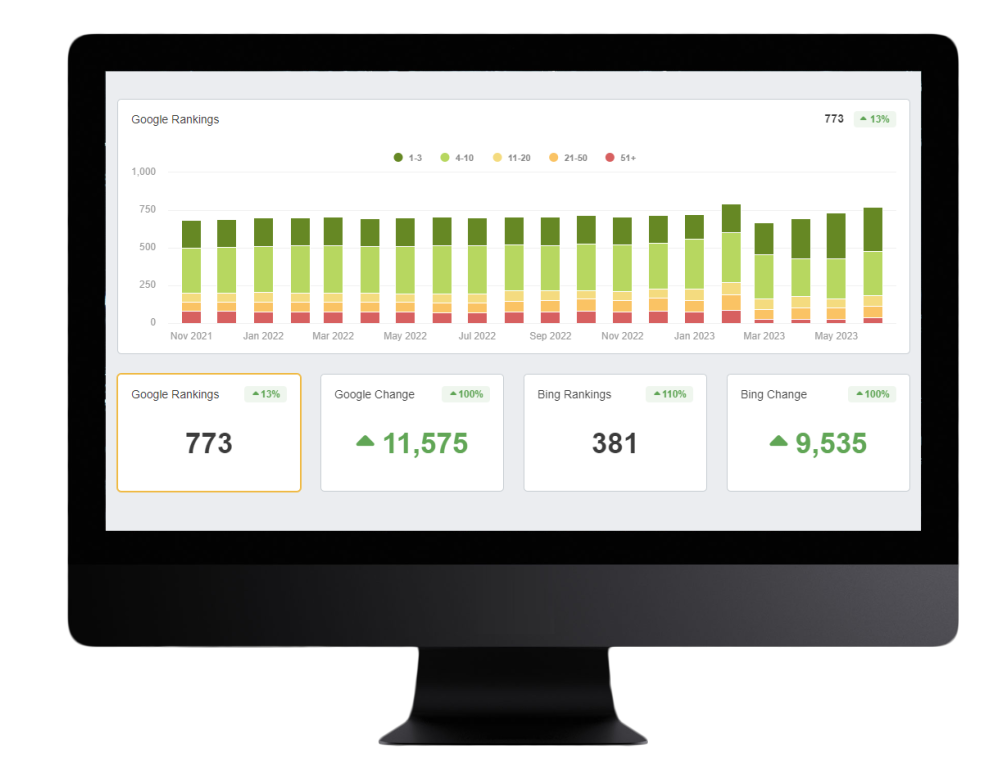
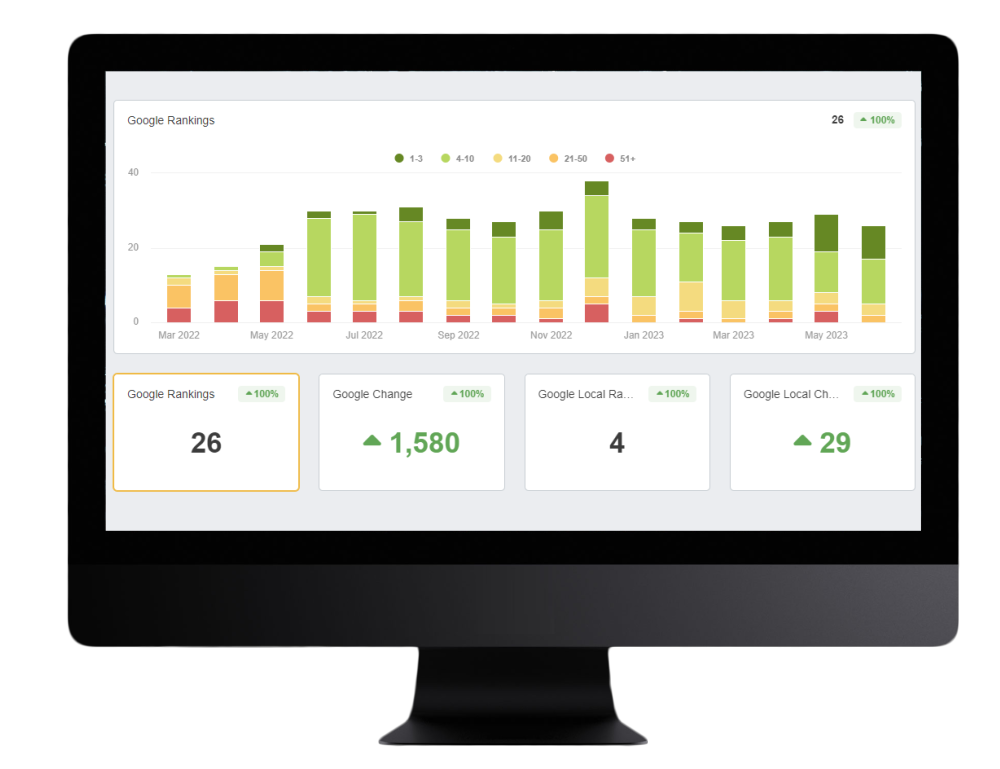
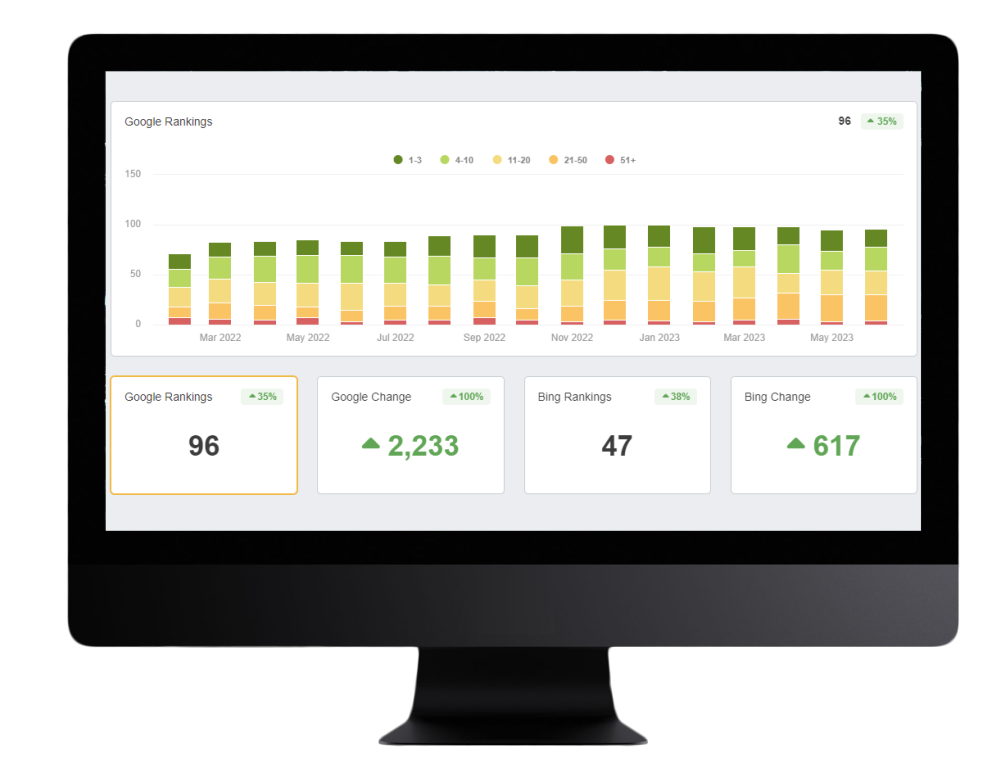
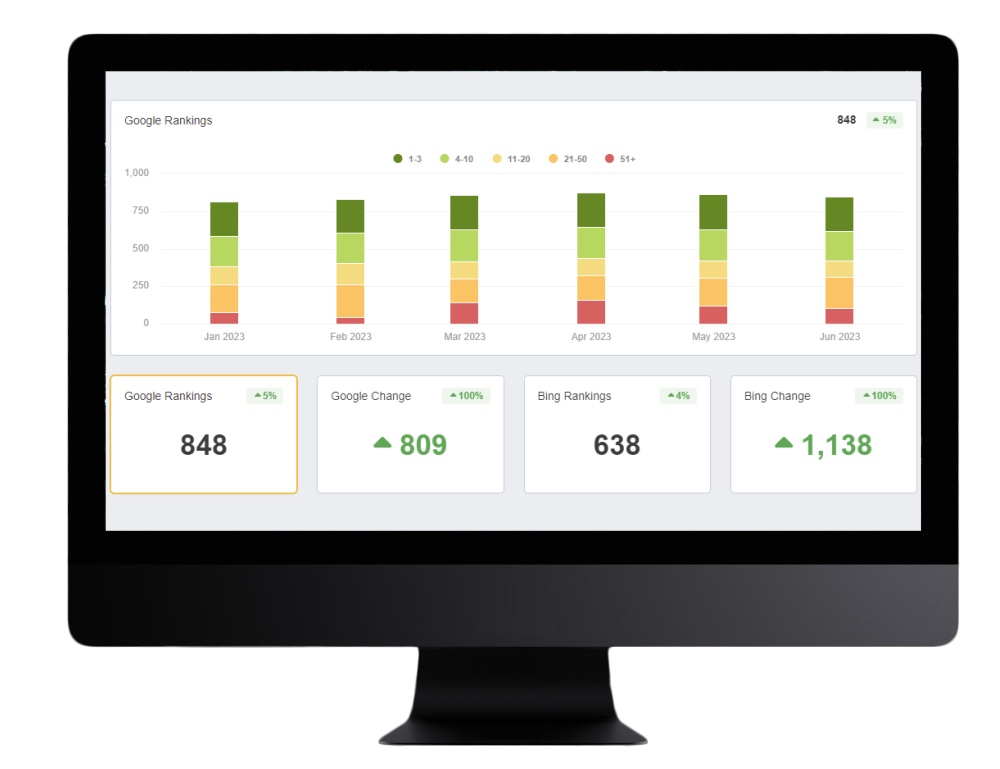
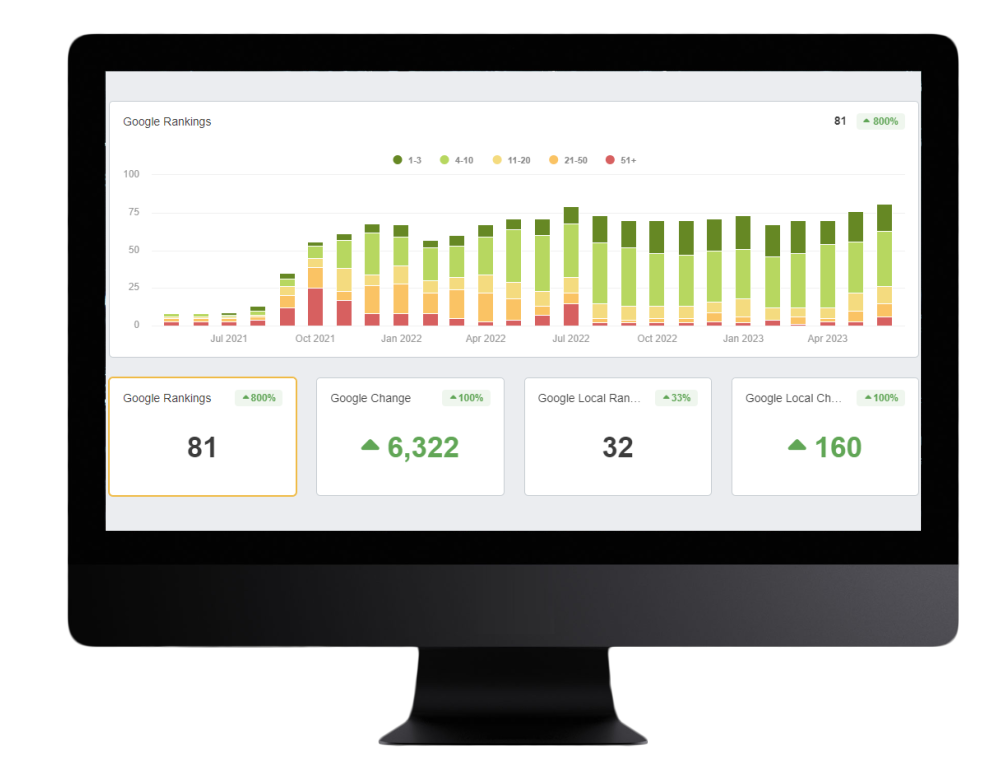
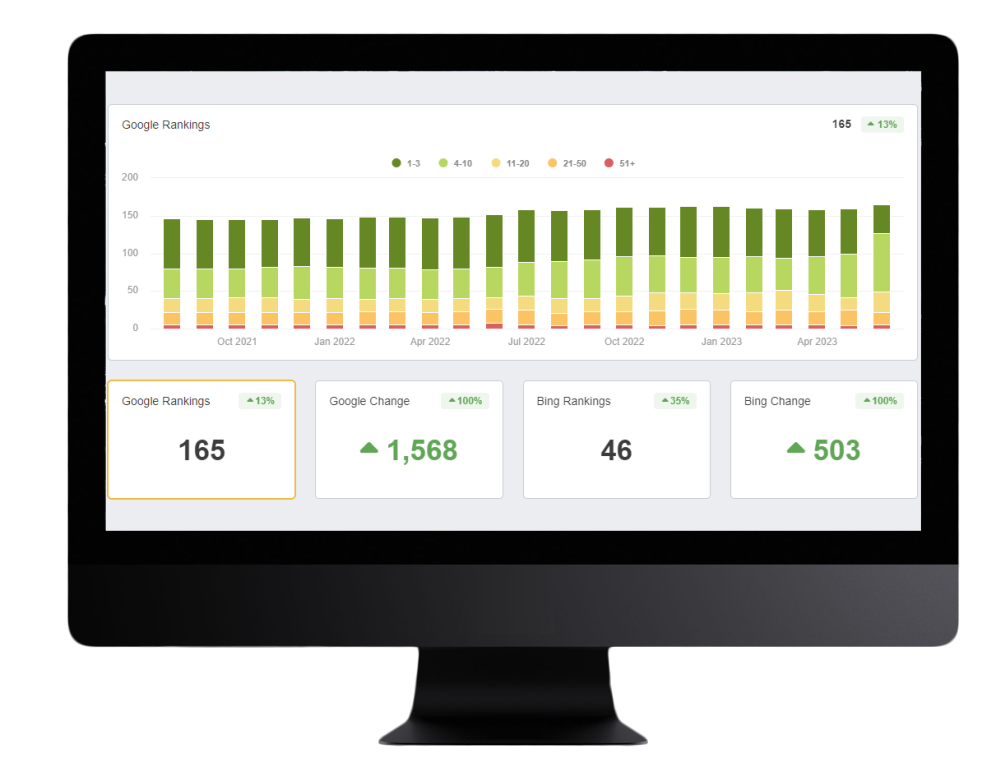
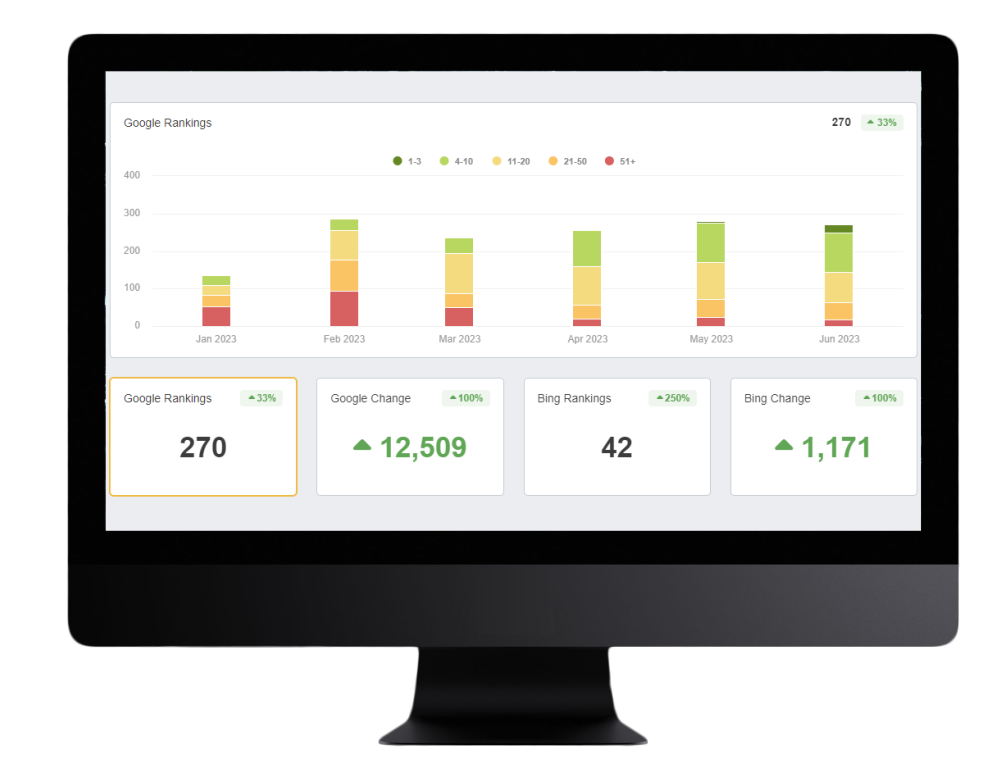
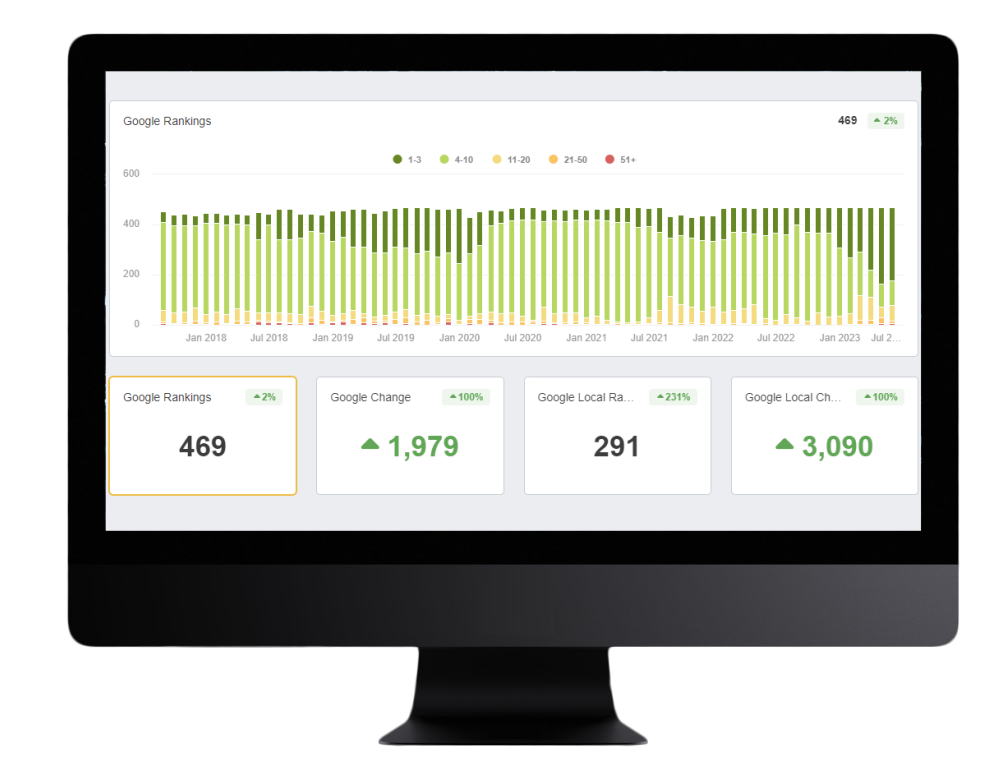













.png)

